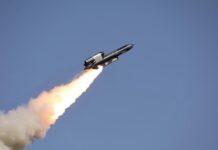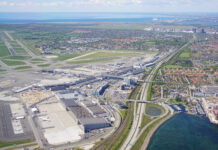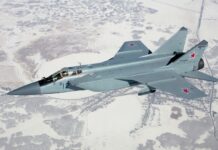This spring, Ukraine launched a counteroffensive in the country’s South with the objective to advance to the coast of the Sea of Azov and sever a land corridor along the south-east of Ukraine connecting mainland Russia with occupied Crimea. Ahead of the operation’s start, various speculations had appeared in the media as to the possible date for the effort being launched, along with wide expectations of a rapid advance, recalling the example of 2022’s liberation of vast areas in Kharkiv Oblast and the right bank of the Dnipro in Ukraine’s South. Such expectations could be due to the lengthy training of Ukrainian assault brigades and supplies of Western-made armoured vehicles. In June 2023, reports started to emerge of intensified combat engagements on the southern front, which many took to mean that the counteroffensive had indeed been launched.

However, there was no blitz breakthrough of the Russian defence lines as Ukraine’s offensive effort dragged on. This led to broad criticism of the slower-than-expected advance. Naturally, Russian propaganda could not miss such an opportunity, immediately picking up on the wave and spinning unverified allegations of Ukraine’s losses in terms of armoured hardware and manpower.
At the same time, many in expert and military circles had not shared overly-optimistic expectations of the counteroffensive, realising the complexity of the situation. After all, in the southern part of Ukraine, where the main blow was expected, the Russian military had enough time to dig in as Ukraine was waiting for the required weapons to arrive and troops to be trained.
In turn, hopes for a quick counteroffensive were fed by the fact that Western partners were providing training and donating military equipment to the Ukrainian Armed Forces, including heavy armoured vehicles. It must be noted that the armour supplied by partners truly turned out to outperform Soviet models in many ways, including maintainability, ease of use, and crew survivability. This was evident from the first weeks of offensive operations. However, the dense minefields, as well as the sophisticated network of trenches and other obstacles, prevented Ukraine from making full use of the advantages offered by Western technology. Moreover, Ukrainian commanders ordered attacks on Russia’s defensive lines while doing their utmost to preserve soldiers’ lives, given Russia’s objective advantage in terms of manpower.
Another reason for the sluggish advance is the lack of air superiority. Since the start of the offensive, Russian forces have deployed guided bombs, loitering munitions, and attack helicopters, especially in the South. Ukraine was forced to preserve its fleet of aircraft, not allowing them to get too close to the front lines, given the limited capabilities of Soviet-era warplanes. In turn, Western doctrine initially assumes the regular use of aviation to support ground forces, as was in the case in Iraq.
Considering that the quantity of heavy armour received from Western partners was also rather limited, Ukrainian commanders decided that deploying these assets directly to the front lines would be risky. In this context, just weeks into the launch of assault operations, the Ukrainian military adjusted its strategy, with the aim of minimising its own losses while continuing to degrade Russian troops through artillery and long-range missile strikes.
Once these considerations are laid down, the latest offensive trends along the Zaporizhzhia front gives grounds for some cautious optimism. At the same time, it is clear that the Russians will do their best to hold their ground. The success of Ukraine’s Armed Forces in these areas will further call into question the implementation of the initially stated objectives of Russia’s so-called ‘Special Military Operation’ in Ukraine.
Meanwhile, the Kremlin is working to legitimise the occupation regime in the occupied territories, where it held sham elections. Should towns such as Tokmak be regained or even besieged by Ukraine, this would deal a major reputational blow to Moscow, since the only city that the Russian Federation managed to capture during the Winter 2022 – Spring 2023 offensive was Bakhmut in Donetsk region.
It must also be noted that Russia’s reserves in the southern operational zone are rather ambiguous. The main defending forces have been amassed in the areas of the Ukrainian offensive. This raises the question of whether Russian forces will be able to keep defending if the Ukrainians penetrate the main line of defence. Moreover, following Ukraine’s receipt of Storm Shadow/SCALP cruise missiles, Russian high-value targets have been struck fairly frequently.
Although optimism for Ukraine’s counteroffensive has diminished for the moment, its success should not be regarded as equivalent to an ultimate victory. First, the outcome of the effort remains unclear. Secondly, statements voiced by Russian officials suggest Moscow is nowhere near suspending their military campaign, at least not going into the winter and spring. However, this position may change if Russian forces find themselves unable to defend and retreat from territory they presently occupy. This scenario could be accelerated if Ukraine’s Western partners deliver ATACMS tactical ballistic missiles, and F-16 fighter aircraft as they have signalled. Fortunately, Ukraine’s allies have broadly indicated that they understand the importance of these deliveries for Ukraine’s war effort.
Alex Horobets












